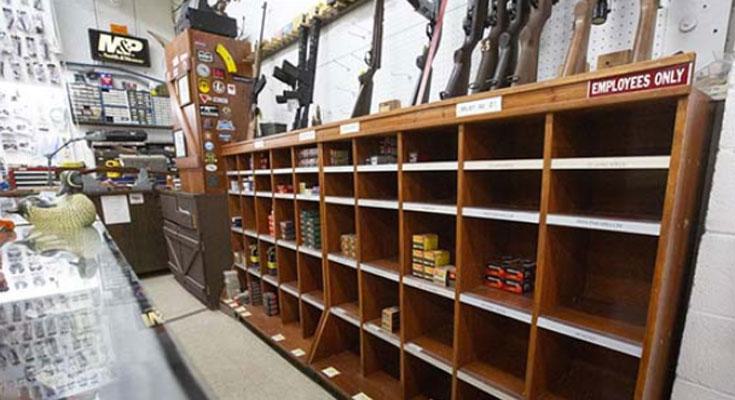By Craig Monger
A national ammunition shortage is affecting the nation, which has led to higher prices and longer wait times for gun owners. The shortage of ammunition is a compound problem that cannot be attributed to a single cause.
Gun sellers in Alabama and across the U.S. have credited the shortage to the continued demand that began at the beginning of the COVID–19 pandemic. Panic buying started at the beginning of 2020 and has resulted in a large increase in the number of new gun owners. Many say that spike is the underlying cause of the ammo shortage.
Jim (Jimbo) Allen, the owner of Patriot Gun Sales in Wetumpka, described the complete shift in his business since the start of the COVID–19 pandemic.
We’ve sold more guns than we ever have, and we’ve sold more ammo than we ever have,” said Allen.
In the past, Allen has specialized in supplying vintage guns to an older clientele. Since the pandemic, Allen has seen much younger customers seeking more modern firearms. The increase in first-time firearm purchases has naturally increased the demand for ammunition. Longtime gun owners tend to buy guns in calibers for which they already have ammunition. First-time gun owners have no such stock of ammo on hand, causing a dramatic spike in demand.
“COVID did two things,” said Allen. “COVID and the stimulus checks. Here come all these stimulus checks that drive new people out into the stores.”
The market is still attempting to recover from the uptick in gun and ammo sales since the beginning of 2020. According to Allen, the supply of the most common forms of ammo is “in really, really bad shape.”
“There has been a serious lack of hunting ammunition,” Allen said. “I get several calls every day asking me if we got any hunting ammo.”
Many ammo manufacturers have increased their prices significantly as the supply began to not meet the demand.
“I’m all for making money, but there’s no way they can convince me that they had to raise the price [of ammo] by 100% or 200% to make a living,” Allen said. “They’re just seeing an opportunity and seizing it.”
Another cause for the lack of available ammo can be attributed to the restrictions that have been put on the import of foreign-manufactured ammunition.
In August, the State Dept. effectively banned the import of ammunition from Russia by engaging in sanctions against the Russian government. The State Dept. claimed these bans were due to Russia’s use of a nerve agent in the August 2020 poisoning of Russian opposition figure Aleksey Navalny.
According to Small Arms Analytics, Russia is the largest supplier of foreign ammunition in the U.S., accounting for nearly 40% of all imported ammo.
According to Allen, many avid shooters preferred to buy foreign ammunition for training and practice because of the inexpensive cost compared to domestic manufacturers. Domestic manufacturers have higher material and labor costs and therefore require a higher sale price.
Allen suggested the ban on Russian imports encouraged domestic manufacturers to increase their prices since they no longer compete with less expensive foreign brands.
The supply chain in the U.S has also had a marked slowdown in recent months, meaning that the foreign ammunition that remains unaffected by U.S sanctions will still face delays.
Regardless of whether the shortage is caused by demand, higher prices, or lack of imports, there doesn’t seem to be a quick end to the problem. Ammo sellers such as Allen have predicted that it will be at least a year before the ammo supply has returned to normal.
To connect with the author of this story, or to comment, email Craig.monger@1819News.com.










